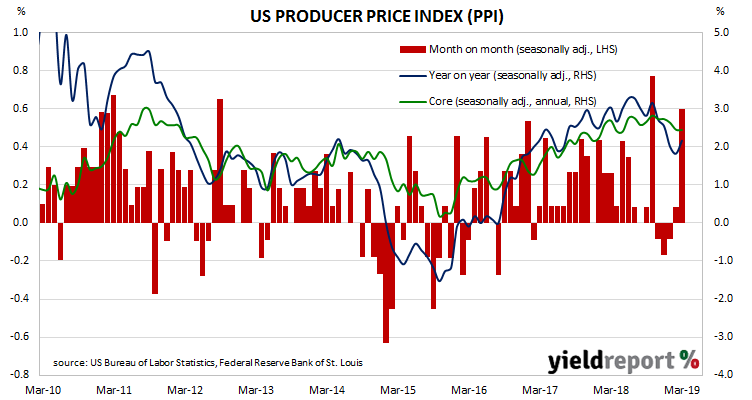The producer price index (PPI) is a measure of prices charged by producers for domestically produced goods, services, and construction. In the US, it is constructed by the Bureau of Labor Statistics in a fashion similar to the consumer price index (CPI) except it measures prices received from the producer’s perspective. It is another one of the various measures of inflation tracked by the US Fed, along with core personal consumption expenditure (PCE) data.
The latest figures for March have been published by the Bureau and they indicate producer prices jumped by 0.6% during the month after seasonal adjustments. The result was greater than the expected 0.3% increase and noticeably above February’s 0.1% increase. On a 12-month basis, the rate of producer price inflation after seasonal adjustments accelerated to 2.2% after recording 1.8% in February and 2.5% in January.

ANZ economist Jack Chambers said, “US PPI delivered its strongest increase in five months, up 0.6% in March, on the back of stronger petrol prices. Core measures were softer, suggesting a lack of underlying pipeline inflationary pressures.”

